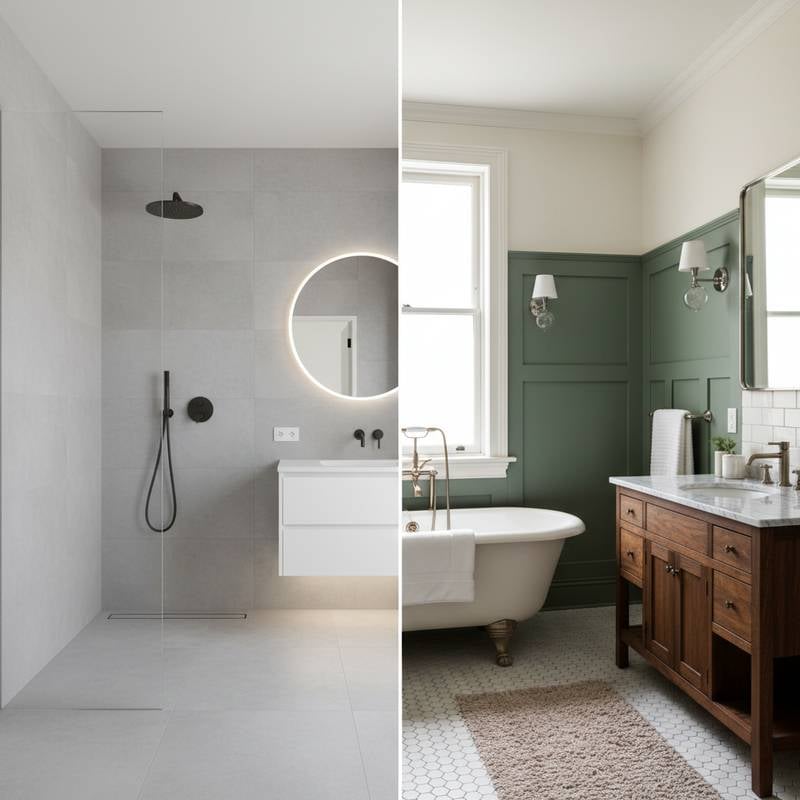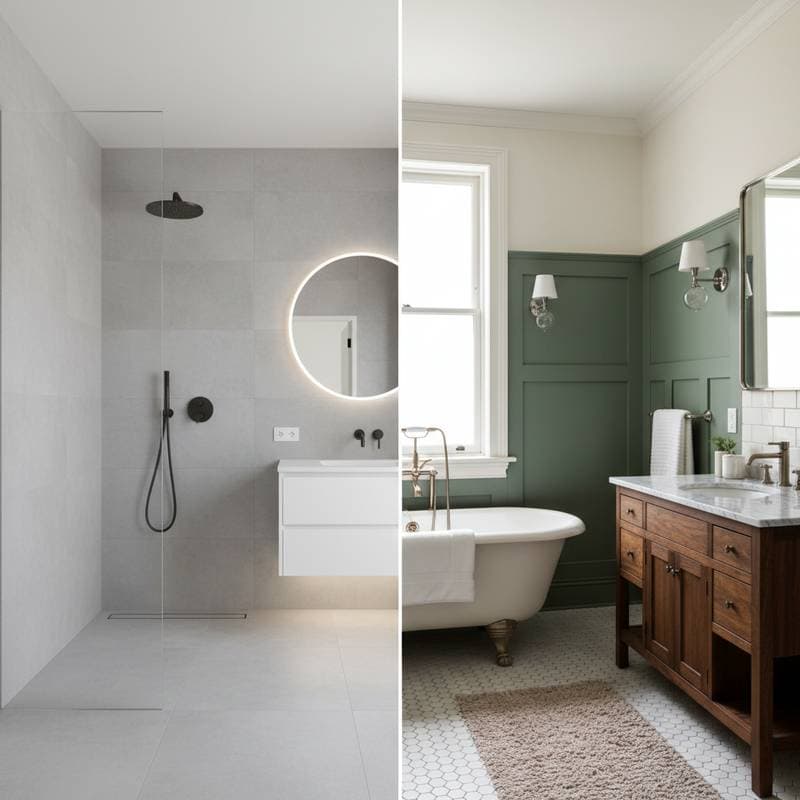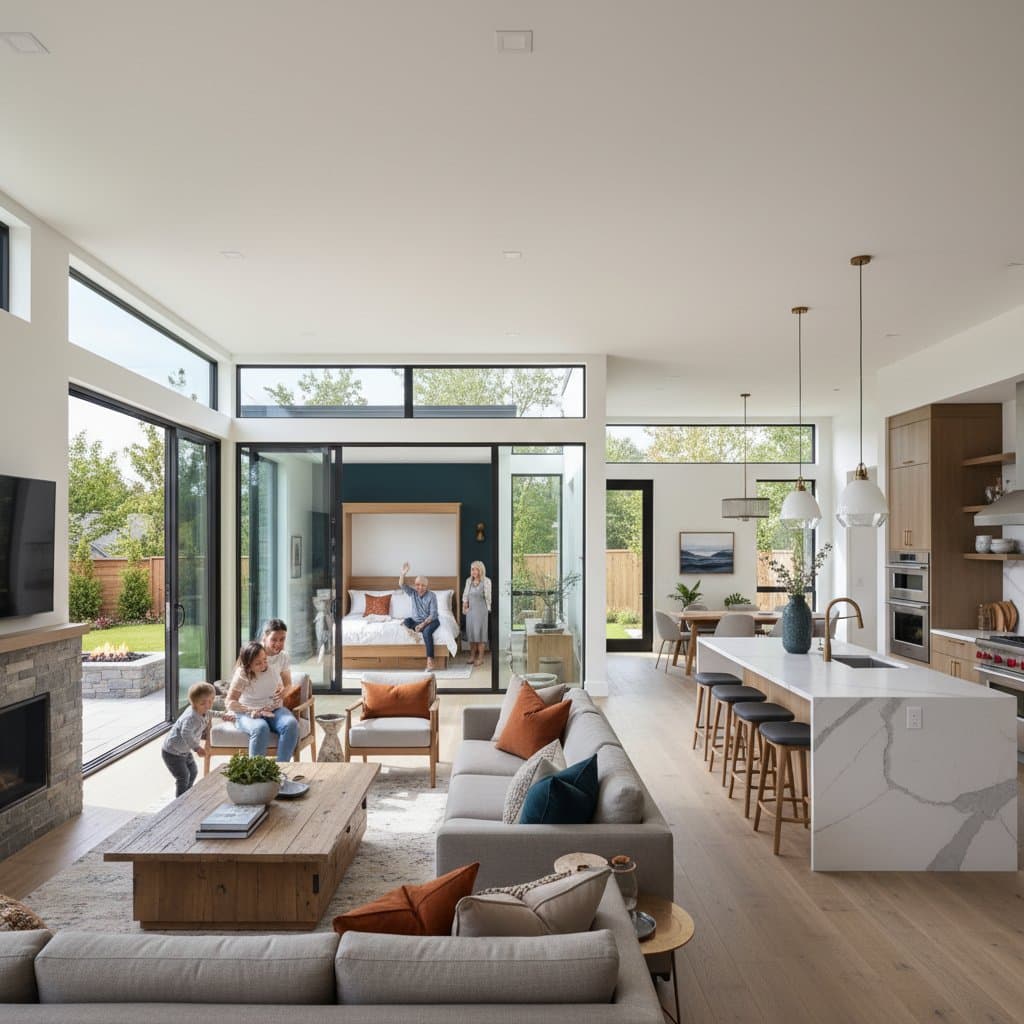Introduction to Luxury Spa Bathroom Remodeling
A luxury spa bathroom remodel transforms an ordinary space into a personal wellness haven. Homeowners seek features such as steam showers, soaking tubs, and ambient lighting to promote relaxation amid daily routines. This guide outlines the process, focusing on budgets between $15,000 and $45,000, while emphasizing practical steps for success.
Projects of this scale require thoughtful preparation to balance aesthetics, functionality, and compliance with building codes. Factors like room size, material choices, and fixture selections influence the final cost. By following structured planning, individuals achieve a durable, inviting retreat that enhances property value and quality of life.
Understanding Your Budget
Budgets for luxury spa bathroom remodels typically range from $15,000 to $45,000, depending on scope and specifications. Basic upgrades, such as installing a rainfall showerhead and updated vanity, fall toward the lower end around $15,000 to $25,000 for a standard 50-square-foot space. More elaborate designs incorporating heated floors, custom cabinetry, and smart technology push costs to $30,000 or higher.
Break down expenses into key categories for clarity. Demolition and plumbing adjustments account for 20 to 30 percent of the total, often $3,000 to $10,000. Materials like natural stone tiles or high-end fixtures contribute another 40 percent, ranging from $6,000 to $18,000. Labor, including installation by skilled professionals, comprises the remainder, typically $5,000 to $15,000.
To manage finances effectively, obtain multiple detailed estimates early. Allocate a 10 to 15 percent contingency fund for unforeseen issues, such as hidden water damage or code upgrades. Prioritizing energy-efficient elements, like low-flow fixtures, can qualify for rebates and reduce long-term utility expenses.
Planning and Permits
Effective planning begins with assessing your current bathroom layout and identifying desired features. Measure the space precisely and sketch potential changes to visualize flow. Consult local building codes to ensure feasibility, as spa elements like steam enclosures demand specific structural reinforcements.
Permits represent a critical step in any remodel. Most jurisdictions require approvals for plumbing, electrical, and structural modifications. Expect to submit detailed plans showing fixture placements, ventilation systems, and waterproofing details. Processing times vary from one to four weeks, so apply early to avoid delays.
Engage a professional designer if the project involves complex integrations, such as combining a sauna with existing HVAC. Safety inspections occur at milestones, including rough-in stages and final walkthroughs. Adhering to permit requirements prevents costly rework and ensures occupant protection.
Vetting and Hiring a Contractor
Selecting a reliable contractor sets the foundation for a smooth remodel. Verify the professional holds a valid license and carries comprehensive insurance, including general liability and workers compensation. Request proof of bonding to safeguard against incomplete work or damages.
Seek local references from recent clients to gauge reliability and craftsmanship. Visit completed projects to evaluate quality firsthand. Inquire about the contractor's experience with spa-specific installations, such as waterproofing steam rooms or integrating heated towel racks.
Obtain a written contract that specifies scope, materials, timelines, and payment schedules. Include start and completion dates, with penalties for delays. Review warranties for labor and products, aiming for at least one year of coverage. Clear communication throughout the process minimizes misunderstandings and ensures alignment with your vision.
Key Design Elements for a Spa-Like Atmosphere
Incorporate elements that evoke serenity and luxury without overwhelming the space. Steam showers provide therapeutic moisture; opt for fully enclosed units with built-in seating and aromatherapy ports. Soaking tubs in freestanding styles add elegance, paired with floor-mounted fillers for a spa resort feel.
Select materials that endure moisture while enhancing aesthetics. Marble or quartz surfaces offer timeless appeal, but require sealing to prevent staining. Porcelain tiles mimic stone veining at a fraction of the cost and maintenance. Integrate natural wood accents, like teak benches, for warmth against cool tones.
Lighting plays a pivotal role in setting the mood. Install recessed LEDs with dimmer controls for adjustable illumination. Add backlit mirrors and sconces to eliminate harsh shadows. Ventilation systems, including quiet exhaust fans, maintain air quality and prevent mold growth.
Installation and Safety Considerations
Professional installation ensures longevity and compliance. Plumbers reposition pipes for new fixtures, while electricians wire for heated elements and outlets. Waterproofing membranes protect subfloors from leaks, a non-negotiable for wet areas.
Prioritize safety features throughout. Slip-resistant flooring, such as textured porcelain, reduces fall risks. Ground-fault circuit interrupters on all outlets prevent shocks in humid environments. Ensure grab bars near tubs and showers support weight without compromising design.
Timelines for full remodels span three to six weeks, including demolition, installation, and inspections. Coordinate trades to avoid overlaps, starting with rough work before finishes. Regular site checks confirm progress and address issues promptly.
Pro Tips for a Successful Remodel
Focus on durable, low-maintenance selections to sustain the spa experience. Natural materials like marble suit high-traffic areas only with rigorous upkeep; porcelain alternatives deliver comparable elegance with easier cleaning.
Incorporate built-in niches in shower walls for organized storage of toiletries. Neutral palettes in soft grays or beiges foster tranquility. Dimmer switches allow customization of lighting for morning routines or evening unwinds.
Add a fold-down bench in the shower for seated relaxation. Simplify layouts to minimize plumbing rerouting, which controls costs. These enhancements yield a space that balances form and function seamlessly.
Frequently Asked Questions
What flooring options suit a spa bathroom best?
Porcelain tile with a textured surface provides durability and slip resistance, ideal for wet environments.
Is a steam shower feasible in every bathroom?
Installation requires a fully enclosed, waterproofed area with adequate ceiling height and proper venting to comply with codes.
What costs should one anticipate for a luxury spa bathroom?
Ranges from $15,000 to $45,000, influenced by room dimensions, fixture quality, and customization levels.
Are permits necessary for a steam shower?
Yes, approvals for plumbing and electrical work apply in most locations to ensure safe integration.
How long does a full spa bathroom remodel require?
Typically three to six weeks, encompassing construction, inspections, and final touches.
Which lighting enhances a spa bathroom effectively?
Moisture-rated LED fixtures with dimmers and warm tones create inviting, adjustable ambiance.
How does one manage post-shower humidity?
Operate the exhaust fan for a minimum of 15 minutes and ventilate by opening the door to promote air circulation.
Maintaining Your Spa Retreat
Regular upkeep preserves the allure and performance of your new bathroom. Clean surfaces weekly with mild, non-abrasive solutions to avoid damage. Service fixtures and ventilation annually to detect wear early.
Monitor for leaks or mold, addressing them immediately to protect integrity. Refresh grout and seals every few years for sustained waterproofing. These practices extend the lifespan of your investment, delivering ongoing relaxation and home value appreciation.











